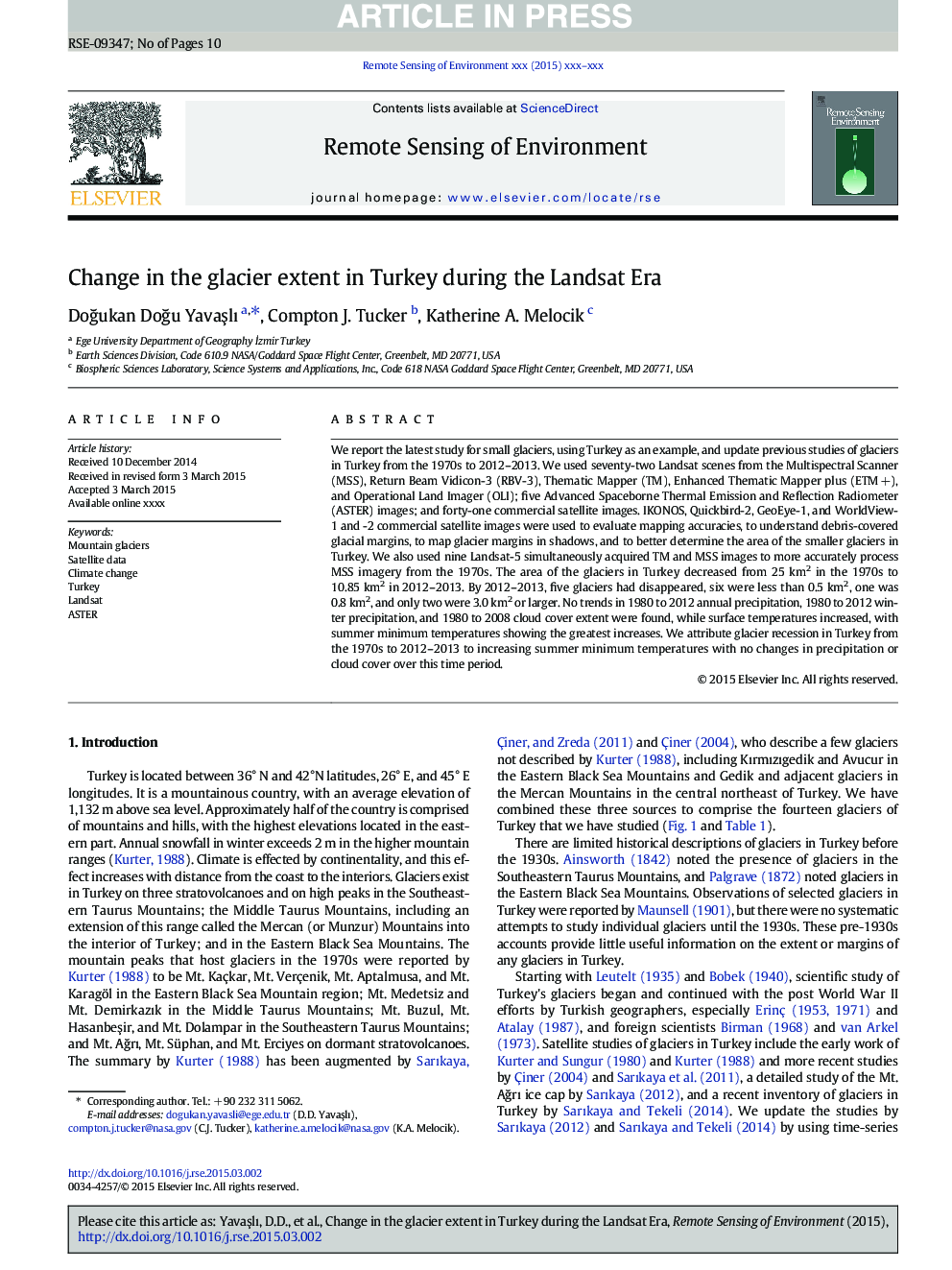| Article ID | Journal | Published Year | Pages | File Type |
|---|---|---|---|---|
| 6346092 | Remote Sensing of Environment | 2015 | 10 Pages |
Abstract
We report the latest study for small glaciers, using Turkey as an example, and update previous studies of glaciers in Turkey from the 1970s to 2012-2013. We used seventy-two Landsat scenes from the Multispectral Scanner (MSS), Return Beam Vidicon-3 (RBV-3), Thematic Mapper (TM), Enhanced Thematic Mapper plus (ETMÂ +), and Operational Land Imager (OLI); five Advanced Spaceborne Thermal Emission and Reflection Radiometer (ASTER) images; and forty-one commercial satellite images. IKONOS, Quickbird-2, GeoEye-1, and WorldView-1 and -2 commercial satellite images were used to evaluate mapping accuracies, to understand debris-covered glacial margins, to map glacier margins in shadows, and to better determine the area of the smaller glaciers in Turkey. We also used nine Landsat-5 simultaneously acquired TM and MSS images to more accurately process MSS imagery from the 1970s. The area of the glaciers in Turkey decreased from 25Â km2 in the 1970s to 10.85Â km2 in 2012-2013. By 2012-2013, five glaciers had disappeared, six were less than 0.5Â km2, one was 0.8Â km2, and only two were 3.0Â km2 or larger. No trends in 1980 to 2012 annual precipitation, 1980 to 2012 winter precipitation, and 1980 to 2008 cloud cover extent were found, while surface temperatures increased, with summer minimum temperatures showing the greatest increases. We attribute glacier recession in Turkey from the 1970s to 2012-2013 to increasing summer minimum temperatures with no changes in precipitation or cloud cover over this time period.
Related Topics
Physical Sciences and Engineering
Earth and Planetary Sciences
Computers in Earth Sciences
Authors
DoÄukan DoÄu YavaÅlı, Compton J. Tucker, Katherine A. Melocik,
